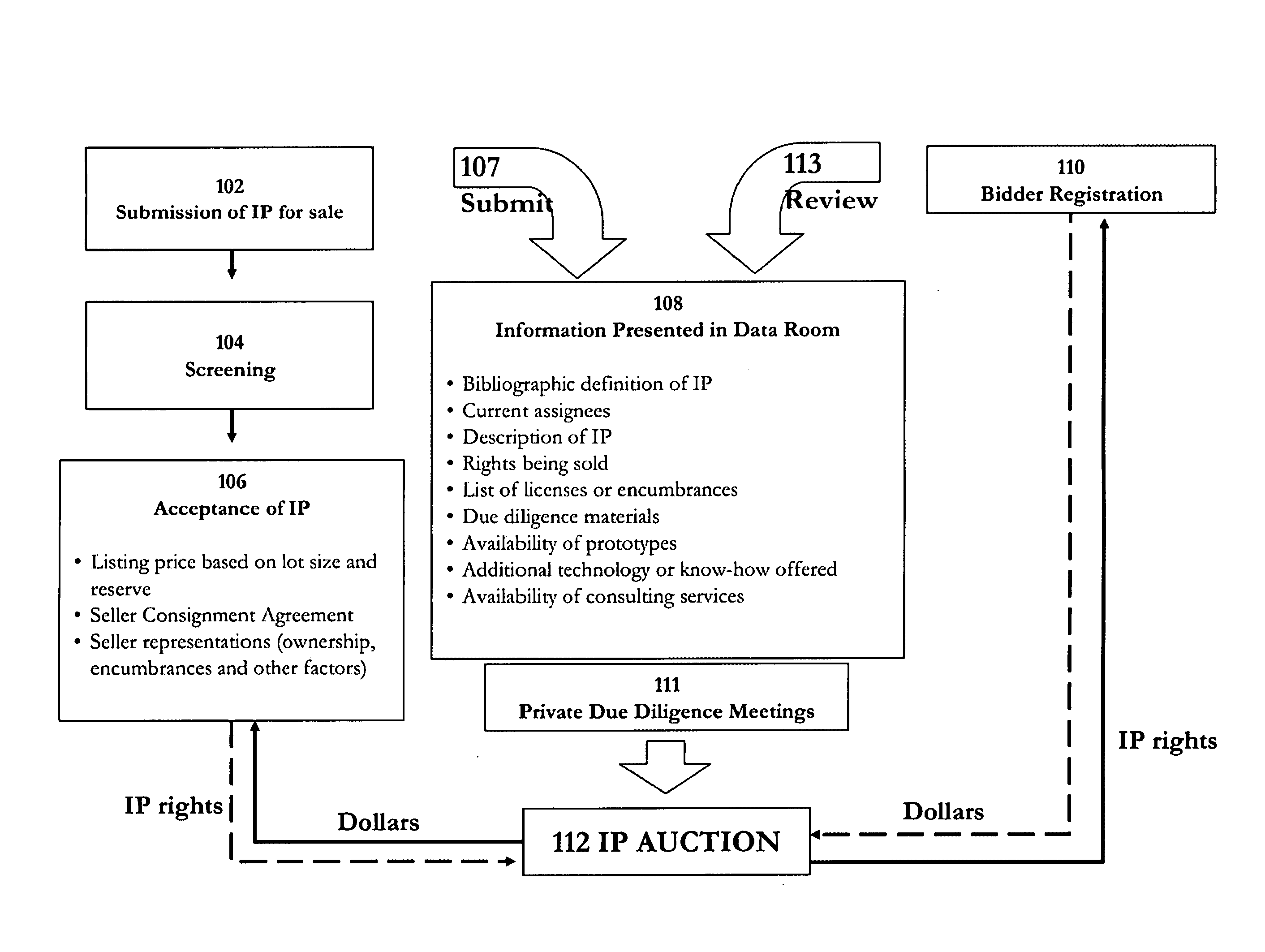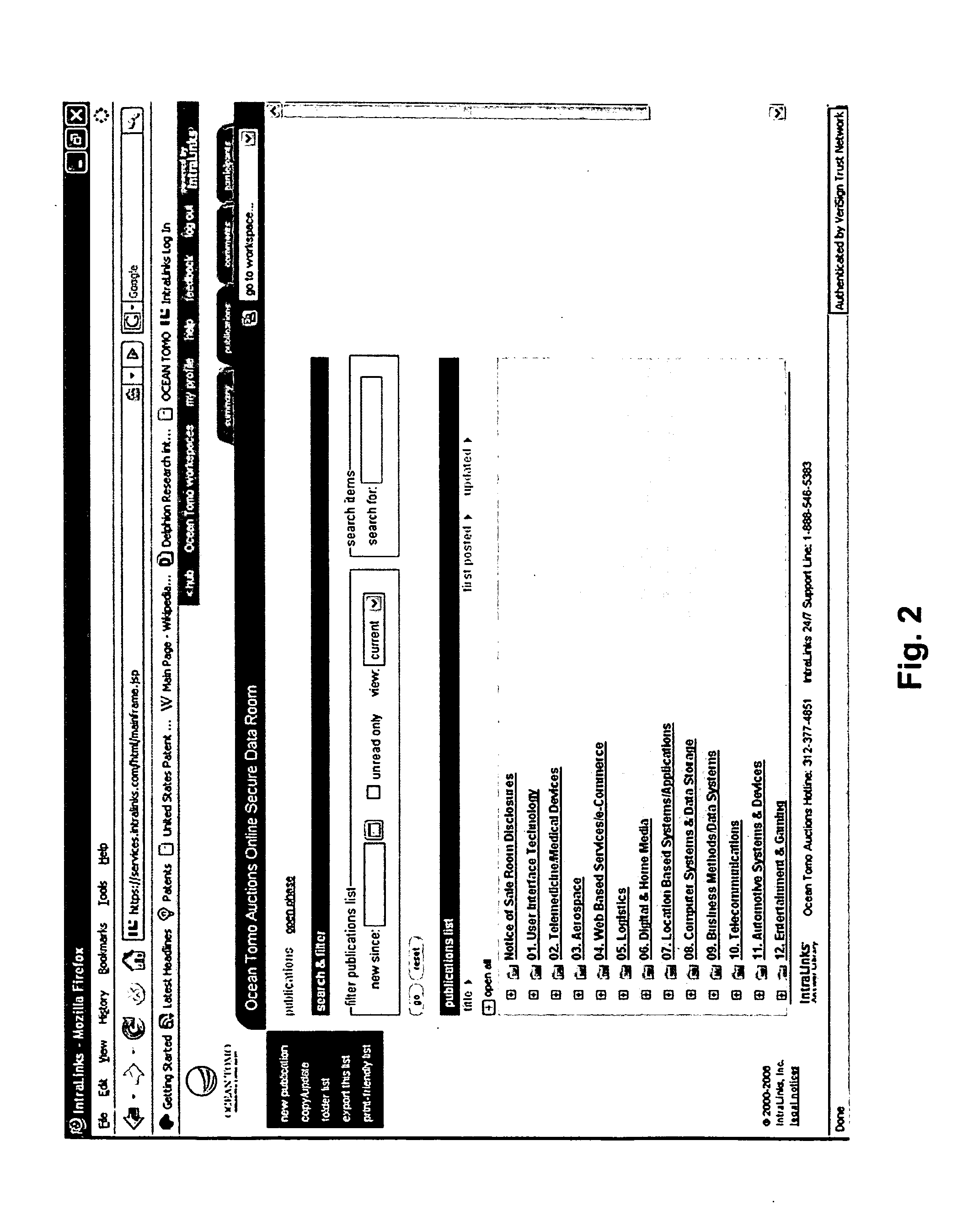System And Method For An Intellectual Property Marketplace
a technology of intellectual property and marketplace, applied in the field of systems and methods for transacting intellectual property, can solve the problems of long time, high transaction cost, and long time-consuming, and achieve the effects of facilitating information exchange, reducing the amount of time required to complete a transaction, and facilitating the exchange of information
- Summary
- Abstract
- Description
- Claims
- Application Information
AI Technical Summary
Benefits of technology
Problems solved by technology
Method used
Image
Examples
example 1
[0043]A method for transacting intellectual property (IP) includes: receiving an executed document assigning an intellectual property right to an undefined party; holding the executed document in escrow; receiving one or more offers for the intellectual property right; determining a winning party based on the one or more received offers; and releasing the executed document to the winning party.
example 2
[0044]A method for protecting marketplace participants from willful infringement includes: receiving a first agreement from a first party, wherein the first agreement specifies that the first party will not use another party's participation in the marketplace as evidence of willful infringement; allowing the first party to participate in a marketplace transaction; and disallowing a second party to participate in the marketplace transaction, wherein the second party has not agreed to not use another party's participation in the marketplace as evidence of willful infringement.
example 3
[0045]A method for ensuring that intellectual property remains in salable condition includes: entering into a consignment agreement with a first seller, the consignment agreement authorizing a sale of an intellectual property right at auction; attempting to sell the intellectual property right at auction on a first auction date, wherein if the intellectual property right does not sell at auction, the consignment agreement obligates the first seller to maintain the intellectual property right in a salable condition for a period of time past the first auction date.
PUM
 Login to View More
Login to View More Abstract
Description
Claims
Application Information
 Login to View More
Login to View More - R&D
- Intellectual Property
- Life Sciences
- Materials
- Tech Scout
- Unparalleled Data Quality
- Higher Quality Content
- 60% Fewer Hallucinations
Browse by: Latest US Patents, China's latest patents, Technical Efficacy Thesaurus, Application Domain, Technology Topic, Popular Technical Reports.
© 2025 PatSnap. All rights reserved.Legal|Privacy policy|Modern Slavery Act Transparency Statement|Sitemap|About US| Contact US: help@patsnap.com



